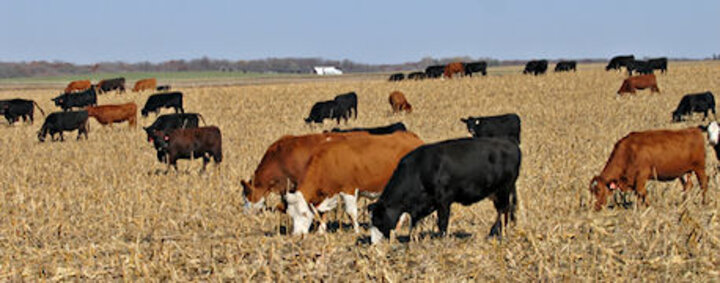
The Western Corn Belt has historically been corn and wheat cropping systems with cattle integrated on nearby grasslands. Recent agricultural production data ranked Nebraska, South Dakota, Kansas, and North Dakota in the top 10 states for both corn and beef cattle production in the United States. In 2017, these four states had about 20% of the beef cow inventory in the United States with Nebraska alone having 1.9 million beef cows (USDA National Agricultural Statistics Service, 2018).
Forage-based livestock production is a fundamental component of these agricultural economies. However, a large quantity of grasslands in this region were converted into annual crops during the mid-2000s (Wright and Wimberly, 2013). To maintain the efficiencies of beef cattle production systems, synergistic use of forage resources in a sustainable manner is essential. In addition to grasslands, this includes the complementary use of corn residue for grazing during the winter months. In this article, we provide an economic assessment of current corn residue grazing in Nebraska as well as some comparisons to Kansas, South Dakota, and North Dakota.
Value to the Crop Sector
Using $15 per acre as the most commonly reported corn residue grazing rental rate for Nebraska (Cox-O’Neill et al., 2017), we estimated the current value of grazed corn residue in Nebraska at greater than $74 million (Table 1) in returns to the crop sector. Rental rates for corn residue grazing in nearby states were much lower than in Nebraska. For comparison, regional estimates of average cash rent per acre for crop residue in 2017 averaged $7.50 per acre in Kansas. Rental rates for grazed corn residue in South Dakota and North Dakota were $12.00 and $5.00 per acre, respectively.
A survey of Nebraska farmers indicated that 40% of corn producers currently not grazing corn residue would not consider doing so regardless of potential revenue from the activity (Cox-O’Neill et al., 2017). As such, we estimated that a conservative increase in grazing utilization of 10% of the 4.3 million acres of corn residue available might add $6.4 million additional value to the bottom line of crop producers in Nebraska (Table 1).
| Corn Residue | Residue Value | ||||||
| Grain harvested (acres) |
Grazed (% of acres) |
Baled (% of acres) |
Total harvested (% of acres) |
Available to graze (acres) |
Rental rate ($/ac) |
Current ($ millions) |
10% increase ($ millions) |
| 9,297,080 | 53.5 | 0.5 | 54 | 4,276,560 | 15 | 74.6 | 6.4 |
Continue Reading in this week's Cornhusker Economics, published by the Department of Agricultural Economics.
